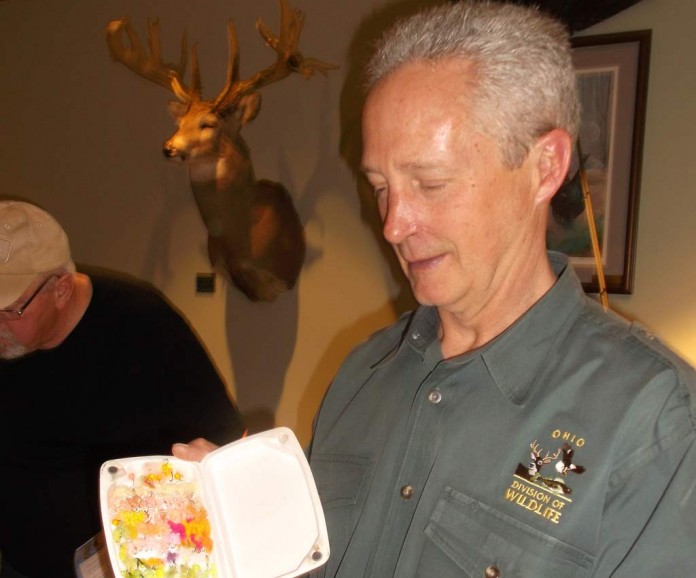
Ohio’s steelhead fishery is second to none and in fact, ranks as one of the very best, according to steelhead trout addicts who have been known to chase these exciting trophy salmonids from the Redwood forests to the New York Island.
Buckeye pride
Now add “These trout are meant for you and me,” and you’ve got a song that reeks of fast fishing action all year long; exactly what steelhead trout fishing is all about. But it the steelhead fishery hasn’t always been a Buckeye point of pride.
Stocked fish
Several different salmonids have been stocked in the Ohio waters of Lake Erie but most efforts have been less than robust, according to Division of Wildlife fisheries biologist Phil Hillman, a guy who has been deeply involved with most of the efforts to create a sustainable and productive salmonids program for the last few decades. Chinook salmon, Coho salmon, Brown Trout, and a species of rainbows known as Ohio’s London Strain, have all had their day, a drab day that involved thousands of stocked fish that were never seen again with few exceptions.
Fishing opportunity
While the salmon stockings flopped, the steelhead program has blossomed into a remarkable fishing opportunity for what most anglers treat as a quality, trophy fishery.
In fact, it’s proven to be mostly a catch and release fishery that at times is only interrupted between the catch and the release to shoot a quick picture.
But back up to the mid-80’s when all the attention focused on an early steelhead stocking effort that held promise; a real possibility for success after several disappointing results with salmon and brown trout.
Rainbow trout
The first couple years featured Ohio-bred London Strain rainbow trout. And why not? After all, steelhead are nothing more than a stream-spawned rainbow that has fed its way through a couple eat-anything-and-everything Lake Erie summers to return as a grown up to its birthright to spawn or at least go through the motions.
But it wasn’t quite that simple, according to Hillman who reached out to nearby Michigan fisheries officials to see how they were doing it.
Not good enough
The fish raised in the early years were OK but OK wasn’t good enough for Hillman and others involved in the steelhead program. Thus began the road to real success.
Hillman said that Ohio now raises nothing but Little Manistee strain trout using spawn stripped from true, wild-strain Michigan fish. Hillman said that 400,000 smolts are stocked each year, a number spread between the Vermillion, Rocky, Chagrin, Grand, and Conneaut rivers.
Young trout
Smolts are young trout that are old enough to imprint or remember the individual odor of the stream they are stocked in. That is extremely important, according to Hillman because the whole point of the steelhead program is that adult fish return to the same stream where anglers pursue them from September to April as the weather permits.
Fast growing
The advantages of Little Manistee trout are many. They are durable and resistant to disease and they grow considerably faster than London strain fish. Little Manistee smolts reach 18 inches in just one year. After three summers of offshore foraging, they average 29 inches in length.
Return home
Another plus Little Manistee fish have is a seven-year life span during which they tend to return to the home stream several times. Since the Ohio steelhead program is based in just a few northeast Ohio Lake Erie tributaries for fisherman to catch later, it is much more than a put and take effort. Actually, most fish that stocked state-wide are intended to be caught soon after.
Not so for steelhead where young trout that are stocked in rivers from the Vermillion to the Conneaut, are on a course that makes them fishable after at least one full year and several years beyond.
We refer to it as a put, grow, and take fishery, Hillman said.












